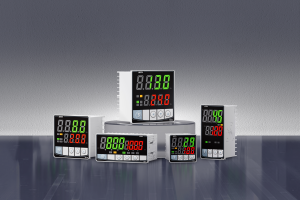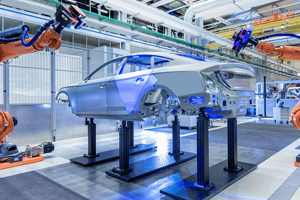How to Use a PID Temperature Controller: A Step-by-Step Guide
1.Introduction
PID (Proportional-Integral-Derivative) temperature controllers can be invaluable assets in industries and laboratories where accurate temperature regulation is critical to performance and accuracy. This guide will explain how best to utilize and administer such devices efficiently so as to achieve peak performance and accuracy.
2.Components of a PID Temperature Controller
A typical PID temperature control system comprises several key elements. They include:
This includes thermocouples or RTDs (Resistance Temperature Detectors), which monitor and record environmental temperature readings for controlled environments. 3. Actuators such as heaters or coolers that adjust according to controller output should also be installed here, whilst 4. Adaptable controls: These provide control for temperature adjustments based on input from PID controllers such as thermostats.
Power Supply: Provides power for the controller and actuator to function.
3.Wiring and Setup
Proper wiring and setup is crucial to the effective operation of a PID temperature controller. Here's what to do:
1.
Identify Wiring Points and Relays: Locate all wiring points on both devices (PID controller and relay). 2.
Connect Thermocouple Terminals on Controller : Attach thermocouples directly into their designated input terminals on controller for connectivity and usage. 3. Connect and Install Sensor Array on Thermocouple
Make sure that all connections are securely fastened, and follow the manufacturer's wiring diagram closely in order to avoid errors and reduce mistakes.
Once your wiring is complete, proceed with initial configuration:
1. Switch on Power Supply of PID Controller
4. Set Target Temperature
Set Desired Target Temperature Utilising PID's Interface 3.1 To Activate PID Control To activate and set target temperatures.
3. Set PID Parameters (Proportional Integral Derivative Settings): Adjust Proportional (P), Integral, and Derivative values as desired to customize how your controller responds to changes in temperature. These settings determine how it reacts.
4.Adjusting Your PID Controller
Tuning Your PID controller accurately is key for precise temperature regulation. There are two primary strategies available.
1. Manual Tuning: Initiate this method manually by making adjustments based on how your system responds; this takes some trial and error, but can be highly effective. 2. Auto-Tuning: Modern PID controllers come equipped with auto-tune functions which automatically optimize PID settings based on optimal performance, making manual tuning unnecessary in many instances.
After tuning, perform testing and calibration on the system to make sure it operates as intended:
1. Observe Temperature Changes: Regularly monitor the system to make sure temperatures reach and stay within the setpoint range. 2. Calibrate If Needed: If readings seem inaccurate, follow manufacturer-specified steps for calibrating.
5.Monitoring and Maintenance
Regular monitoring and maintenance are vitally important to ensuring optimal long-term performance of any PID temperature controller:
1. Consistent Performance: Monitor the system on an ongoing basis to ensure it maintains an ideal temperature setting.
2. Periodic Maintenance: Perform routine maintenance such as cleaning sensors or testing connections as scheduled. 3.
Recalibration: Recalibrate periodically your controller in order to maintain accuracy.
Troubleshooting Common Issues Even with proper setup and maintenance, issues may still arise. Here are some commonly experienced ones and their solutions:
1. Overshooting: If temperature exceeds its setpoint, lower its proportional gain (P value).
2. Oscillations: If temperatures fluctuate around setpoint values, adjust integral (I) and derivative (D) values respectively. 3.
Slow Response: To accelerate response times in your system, increase its proportional gain or make adjustments to integral and derivative settings.
6.Conclusion
Effective use of a PID temperature controller requires knowledge of its components, setup, initial configuration and tuning before tuning and regularly maintaining it for maximum precision and reliability in applications. By following this guide you will ensure maximum temperature regulation throughout all your systems with maximum performance and uptime guaranteed by adhering to it.
- How to Make a PID Controller: Comprehensive Guide for Beginners
- How to Tune a PID Controller in Simulink: A Comprehensive Guide























